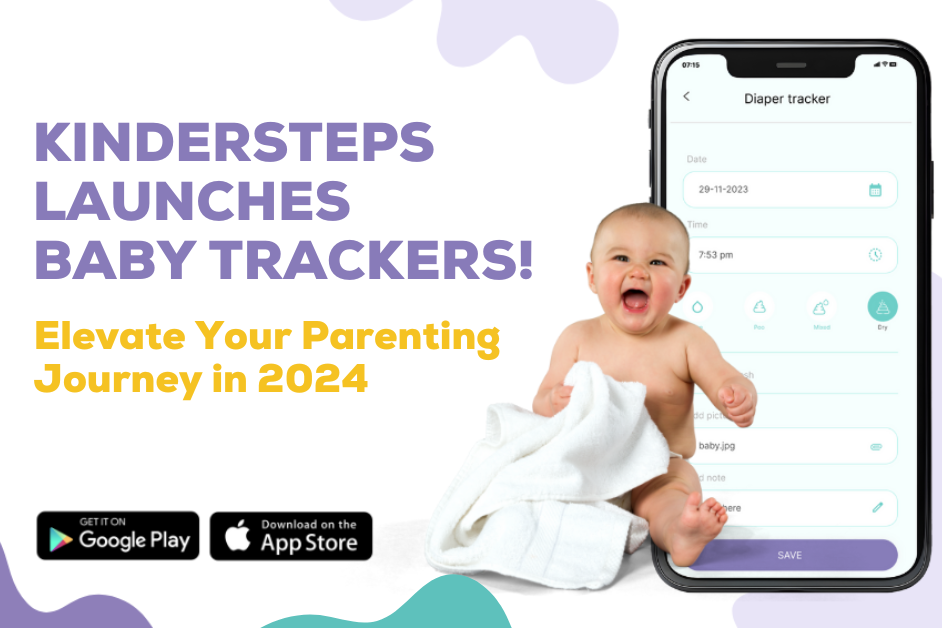What’s on their plate?: A Guide to Healthy Eating for Your Toddlers
Toddlers can be stubborn about food. (About anything, really, but especially food.) As parents, we know it’s important for our kids to eat well. Getting your children to eat well can be challenging. Kids are picky and tend to be quick to say no to new things. Many parents avoid the frustrating battle and then end up feeling guilty about their children's diets. But here's the thing: eating habits are learned behaviors. What children eat at home early in life will influence their choices for the rest of their lives!
This guide will help prepare you to feed your toddler healthy foods, develop good eating habits, and help them explore new foods.
Let’s dive in!
What does a healthy diet for your toddlers look like?
You probably know that some foods are more nutritious than others. But what does that mean? Nutritious foods contain higher amounts of vitamins, fiber, minerals, and other nutrients than "junk" food. You'll get more nutrition from a handful of grapes than from a handful of M&Ms, for example.
Ingredients. Healthy eating means minimizing or trying to avoid foods that contain lots of saturated fats, added sugars, and salt. Eating those ingredients in limited amounts won't hurt you or your kids, but too much leads to weight gain.
According to the dietary guidelines by USDA, the plate of toddlers must have the food from the food groups that make up a balanced diet. That includes vegetables, fruits, grains, dairy, oils, and proteins. How much you and your kids eat is also important. Taking in too many calories every day leads to weight gain, which can negatively affect your family's health. The USDA recommends choosing smaller portion sizes to help reduce the amount you eat.
Fruits
Vegetables
Grains
Tips to ensure a healthy diet and encourage healthy eating habits
Fruits are one of the healthiest foods on the planet and a source of many essential nutrients our body needs. They provide vitamins, minerals, antioxidants, fiber, and many other nutrients that reduce the risk of developing many diseases. Fruits as a food group include fresh, frozen, canned, dried, pureed, and 100% fruit juices. The recommended daily amount of fruits for toddlers is half to one cup. And, at least half of it should be whole fruits.
Like fruits, vegetables are power-packed with nutrients for overall health benefits. There should be various kinds of vegetables on your toddler’s plate every day. These include leafy greens, red and orange veggies, beans, peas, lentils, starchy ones, and others. The different veggies you feed can be raw or cooked. A mix would be excellent. The recommended daily amount of vegetables for toddlers is two-thirds to one cup.
Grains are the primary source of energy in a diet due to their high carbohydrate content. They provide many other vital nutrients as well. Your toddler must have one and a half to two ounces of grain products. You also need to make sure at least 50% of the grain products are whole grains, as refined grain products tend to be nutrient-deficient.
Protein foods
Proteins are another vital nutrient our body requires every day for many body functions. Therefore, your toddler’s plate must include the protein foods such as meat, eggs, and poultry, beans and lentils, soy products, nuts, and seeds. The daily amount recommended for toddlers is around 2 ounces. You should vary the protein sources regularly so that your child gets a variety of nutrients.
Dairy
Last but not least, dairy is another food group that should be present on your toddler’s plates each day. It includes milk and milk products such as yogurt, cheese, butter. You can also go for fortified soy milk or lactose-free milk if your child is lactose-intolerant or you want to avoid excess fat intake. Dairy is a prominent source of calcium and other nutrients like protein, potassium, and vitamin D required for healthy teeth and bones. Your toddlers’ daily diet should have about two cups of dairy products.
Feeding your toddler can be challenging, but that doesn’t mean you can’t get them to eat healthily! If you understand what your child needs and which foods best fit those needs, feeding time can become easier and more enjoyable for both of you.
Here are some tips that can help your toddler grow up to have healthy eating habits!
1. Expose your kid to a variety of food: It is normal for children to be picky eaters. However, if you introduce them to different types of food from early on, they’ll start developing a taste for them. Keeping a variation in the plate is also necessary to make sure they get all kinds of nutrients.
2. Avoid serving unhealthy food items: Excess salt, sugar, and processed food are often associated with harmful health effects. Limit the food that contains too much of any of three, for example, sugary drinks, chips, or white bread.
3. Follow schedules for meals: Having fixed mealtimes not only ensures your child is not left hungry but also helps them develop healthy eating habits. The habit will stay as they grow and will help them stay healthy even later in life.
4. Avoid serving hard-to-swallow foods: Since your toddler’s food pipe is small and teeth yet to fully grow, avoid serving hard-to-swallow foods such as popcorn, peanuts, cherry tomatoes, or whole grapes. Either serve softer versions or cut such foods into pieces.
5. Serve small portions: Toddlers’ stomachs are tiny and quickly fill up. Make sure you serve only as much as they can eat at a time. You can distribute the meals over the day and feed small portions accordingly. Beverages too quickly fill them up. So, give water between the meals only if your kid feels thirsty.
6. Cook together with your child: Involving your child in cooking teaches them about food and encourages them to try new things. Make sure it is fun, and they are away from any dangerous equipment. They can take part in simple tasks like washing veggies.
7. Sit with your kid when they are eating: Don’t let your child eat alone. It’s essential that you sit with them while they eat because they may swallow too much or choke. Moreover, when you’re with them, you can engage them, make them sit still, and encourage them to eat.
8. Teach them to wash their hands: Hygiene is a vital part of healthy eating. Help your child wash their hands before and after eating. Similarly, teach them other hygiene things such as washing fruits before eating. Such practices will help them stay healthy throughout their lives.
9. Lead by example: Your child will learn much more than just table manners from you. It's also crucial that you model proper portions, eat healthily, and show enthusiasm for what's on your and their plate.
As a parent, you must know the foods that should be on your toddler’s plate. Whether it is foods to include, foods to avoid, quantities, or safety measures, all contribute to their health.
We hope this article offers valuable takeaways for you. For more such information, stay tuned to the KinderSteps app. You will find parenting tips and activities vital to your child's long-term development. In addition, you can share photos and videos with your family and friends to celebrate their milestones and achievements.
Wishing you and your child happy and healthy eating experiences!

.jpg?alt=media&token=cb13dfe6-b591-4892-8ba6-697bd06744a8)


.jpg?alt=media&token=166b64a9-274c-400c-95e4-baf0013e7e43)


